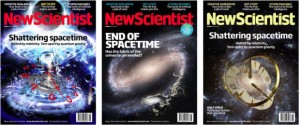There’ve been a lot of online articles about e-readers in the last few weeks in particular as debate rages as to whether or not this technology will be viable. It got me to thinking about e-literature, e-readers, e-books, e-paper, e-ink, e-publishing, literacy and on and on. I’ve divided my musings (or attempts to distinguish some sort of pattern within all these contradictory developments) into three parts.This first part is more concerned with the technology/business end of things.
Samsung just announced that it was moving out of the e-reader business. From an article (Aug. 25 2010) by Kit Eaton in Fast Company,
Need any evidence that the dedicated e-reader is destined to become a mere niche-appeal device? Here you go: Tech giant Samsung is ditching its clever e-paper business after years of clever successes and a ton of research into what may be the future for the technology.
Back in 2009 at CES Samsung teased its good-looking Kindle-challenging e-reader, the Papyrus, which used Samsung’s own proprietary electronic ink system for the display. At CES this year it followed up with its “E6” device, with a rumored cost of $400. Samsung had been shaking the e-paper world since late in 2008 with numerous e-paper announcements, including revealing a color 14-inch flexible e-paper display as long ago as October 2008, which used carbon nanotube tech to achieve its sharp image quality.
Now it seems that revolutions in the e-reader market (namely that odd race-to-the-bottom in pricing over quality of service) combined with revolutions in the tablet PC market (which means the iPad, which can do a million more things than the Papyrus or E6 could) and pricing that neatly undercuts Samsung’s planned price points has resulted in Samsung killing its e-paper research and development.
According to Eaton, Samsung hasn’t entirely withdrawn from the e-reader business; the company will be concentrating on its LCD-based systems instead. Samsung is also releasing its own tablet, Galaxy Tab as competition to Apple’s iPad, in mid-September 2010 (Sept. 2, 2010 news item at Financial Post website).
Dan Nosowitz also writing for Fast Company presents an opinion (Aug. 12, 2010 posting) which sheds light on why Samsung is focusing on LCD -based readers over e-ink-based readers such as Kindle and Nook,
E-ink is one of the more unusual technologies to spring up in recent years. It’s both more expensive and less versatile than LCD, a long-established product seen in everything from iPods to TVs. It’s incredibly specific, but also incredibly good at its one job: reading text.
E-ink e-book readers like the Amazon Kindle and Barnes & Noble Nook offer, in the opinion of myself and many others, the best digital book-reading experience available. …
…
E-ink will die mostly because it fundamentally can’t compete with tablets. That’s why announcements like today’s, in which E-Ink (it’s a company as well as that company’s main–or only?–product) claimed it will release both a color and a touchscreen version by early 2011, is so confusing. But color and interface are hardly the only obstacles e-ink has to overcome to compete with tablets: Its refresh rates make video largely impossible, it can’t cram in enough pixels to make still photos look any more crisp than a day-old McDonald’s french fry, and, most damnably, it’s still extremely expensive.
…
Amazon showed that the way to make e-book readers sell like blazes is to lower the price to near-impulse-item territory. Its new $140 Kindle sold out of pre-orders almost immediately, and there’s been more buzz around the next version than can be explained through hardware upgrades alone. It’s a great reader, don’t get me wrong, but its incredible sales numbers are due in large part to the price cut.
That comment about the price cut for the e-reader as being key to its current success can certainly be borne out by this article E-reader faceoff: Kindle or Nook? Here’s a comparison by Mark W. Smith on physorg.com
There’s a titanic battle brewing in the e-reader market. The Amazon Kindle and Barnes & Noble Nook are leaving competitors in the dust this summer and are locked in a war that has dropped prices by more than half in just a year.
and with this article E-readers gain steam with lower prices and new models by Christine Matthias on Salon.com,
The Wall Street Journal and Tech News Daily have a few things you should consider before wading into the increasingly crowded e-book market, as well as new research that reveals folks with an e-reader tend to read a whole lot more than ever before. The Barnes and Noble Nook is trying to wrestle some market share away from the big boys, and Sharper Image just announced a new e-reader called the Literati that hopes to, maybe, nail down more male readers? It’s got a color screen, in any event.
Or you could get a library card. It’s free.
Addy Dugdale at the Fast Company site in her article, Borders Cuts E-Reader Prices as Kindle Goes to Staples, has this to say,
Borders has slashed the prices of E-Readers Kobo and Aluratek by $20, illustrating just how meh they’ve become in the tech world. The price drop is nothing new–both the Kindle and Nook, Amazon and Barnes & Noble’s market leaders, have seen their prices slashed recently, and they’re thought to be the most exciting brands in the sector. But who does the news bode worst for?
…
But most of all, this news proves that, as my colleague Kit Eaton pointed out a few months back, this is about as good as it gets for the e-Reader. It’s not quite dead, but it’s looking a bit peaky, like. The reason is, of course, the tablet.
There are efforts that may revive e-readers/e-books/e-paper such as this, a new development in the e-paper/e-reader market was announced in a news item on Azonano (Aug.27, 2010),
The FlexTech Alliance, focused on developing the electronic display and the flexible, printed electronics industry supply chain, today announced a contract award to Nyx Illuminated Clothing Company to develop a foldable display constructed from a panel of multiple e-paper screens.
Applications for this type of product are numerous. For consumer electronics, a foldable display can increase the size of e-reader screens without increasing the device foot-print. In military applications, maps may be read and stored more easily in the field. Medical devices can be enhanced with more accessible and convenient patient charts.
“To enable this unique technology to work, our engineers will develop circuitry to simultaneously drive six separate e-paper screens as one single display,” described John Bell, project manager for Nyx. “The screen panels will be able to be folded up into the area of a single panel or unfolded to the full six panel area on demand.”
Convenience is always important and a flexible screen that I could fold up and fits easily into a purse or a pocket offers a big advantage over an e-book or an iPad (or other tablet device). I’d be especially interested if there’s a sizing option, e.g., being able to view in 1-screen, 2-screen, 3-screen and up to 6-screen options.
As for the debate about tablets vs e-readers such as Kindle, Nook, and their brethren, I really don’t know. E-readers apparently offer superior reading experiences but that presupposes interest in reading will be maintained. Something like Mongoliad (as described in my Sept. 7, 2010 posting), for example, would seem ideally suited to a tablet environment where the reader becomes a listener and/or a participant in the story environment.
Tomorrow: Part 2 where I look at the reading and writing experience in this digital world.





